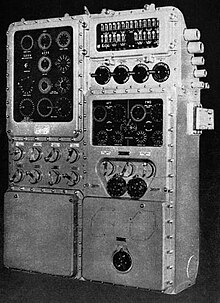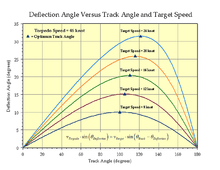
|
|
SUBSIM: The Web's #1 resource for all submarine & naval simulations since 1997
 |
SUBSIM: The Web's #1 resource for all submarine & naval simulations since 1997 |
 12-05-11, 07:57 AM
12-05-11, 07:57 AM
|
#31 | |
|
Grey Wolf
 Join Date: Apr 2011
Location: Curitiba, Brazil
Posts: 938
Downloads: 65
Uploads: 0
|
Quote:
 I wasn't thinking about objective data, actually, as indeed the sub vs ship score does not compare to a basketball game - obviously. In that sense, yeah, not successful. I was refering to the fact that u-boats were perceived as a serious threath, dragged a lot of resources to counter them, and is mentioned in some moments as being near to turn comercial shipping inviable, during the first half of the war. All that without radar. I recall this thread being about radar being indispensable for a minimally-usefull submarine, a thing that the german experience shows otherwise. That's all. |
|

|

|
 12-05-11, 03:03 PM
12-05-11, 03:03 PM
|
#32 | |
|
Grey Wolf
 Join Date: Sep 2009
Location: Egypt
Posts: 840
Downloads: 132
Uploads: 0
|
Quote:
The TDC is just a prediction device people. Its not designed to be the attack method of choice. It just provides an old era target point estimation provided the target doesnt detect you, which means, you havent been spotted. Further, if you complain of a damaged TDC, you should know that experienced sailors eyes IRL, were the most accurate. As a proof, the submariner doesnt follow the TDC, the TDC follows his input. And at some point in time, if the target happens to be where its supposed to be, then the TDC did its job, and the data collection was flawless. But that wasnt the issue in the great war. It was the defective torpedoes that BuOrd issued to the navy, that at some point, one guy looking at an abacus counting sunk ships over a period of time, were too few for the torpedoes issued. And this instigated an inquiry by Lockwood, who discovered the defects and ordered contact pistol by defualt for the remainder of the war. Maybe you know the info above, maybe you dont. But my point is, TDC is a checking device, not a targeting device. I doubt in harbor raids that they even turned it on... Not this clownish stuff we do in a sim..
__________________
x.com/lexatnews |
|

|

|
 12-05-11, 03:45 PM
12-05-11, 03:45 PM
|
#33 |
|
The Old Man
 Join Date: Nov 2003
Posts: 1,304
Downloads: 214
Uploads: 0
|
http://en.wikipedia.org/wiki/Target_Data_Computer
 The TDC was designed to provide fire-control solutions for submarine torpedo launches against ships running on the surface (surface warships used a different computer for their torpedo launches).[4] The TDC had a wide array of handcranks, dials and switches for data input and display.[5] To generate a fire control solution, it required inputs on
The TDC's target tracking capability was used by the fire control party to continuously update the fire control solution to the torpedoes even while the submarine was maneuvering. The TDC's target tracking ability also allowed the submarine to accurately launch torpedoes even when the target was temporarily obscured by smoke or fog. TDC functional description Since the TDC actually performed two separate functions, generating target position estimates and computing torpedo firing angles, the TDC actually consisted of two types of analog computers:
The equations implemented in the angle solver can be found in the Torpedo Data Computer manual.[36] The Submarine Torpedo Fire Control Manual[37] discusses the calculations in a general sense and a greatly abbreviated form of that discussion is presented here. The general torpedo fire control problem is illustrated in Figure 2. The problem is made more tractable if we assume:
  Figure 3: The Torpedo Fire Control Triangle As can be seen in Figure 2, these assumptions are not true in general because of the torpedo ballistic characteristics and torpedo tube parallax. Providing the details as to how to correct the torpedo gyro angle calculation for ballistics and parallax is complicated and beyond the scope of this article. Most discussions of gyro angle determination take the simpler approach of using Figure 3, which is called the torpedo fire control triangle.[7][8] Figure 3 provides an accurate model for computing the gyro angle when the gyro angle is small, usually less than < 30o.[38] The effects of parallax and ballistics are minimal for small gyro angle launches because the course deviations they cause are usually small enough to be ignorable. U.S. submarines during World War II preferred to fire their torpedoes at small gyro angles because the TDC's fire control solutions were most accurate for small angles.[39] The problem of computing the gyro angle setting is a trigonometry problem that is simplified by first considering the calculation of the deflection angle, which ignores torpedo ballistics and parallax.[40] For small gyro angles, ***952;Gyro ***8776; ***952;Bearing - ***952;Deflection. A direct application of the law of sines to Figure 3 produces Equation 1. (Equation 1)  where vTarget is the velocity of the target.vTorpedo is the velocity of the torpedo.***952;Bow is the angle of the target ship bow relative to the periscope line of sight.***952;Deflection is the angle of the torpedo course relative to the periscope line of sight.Range plays no role in Equation 1, which is true as long as the three assumptions are met. In fact, Equation 1 is the same equation solved by the mechanical sights of steerable torpedo tubes used on surface ships during World War I and World War II. Torpedo launches from steerable torpedo tubes meet the three stated assumptions well. However, an accurate torpedo launch from a submarine requires parallax and torpedo ballistic corrections when gyro angles are large. These corrections require knowing range accurately. When the target range was not known, torpedo launches requiring large gyro angles were not recommended.[41] Equation 1 is frequently modified to substitute track angle for deflection angle (track angle is defined in Figure 2, ***952;Track=***952;Bow+***952;Deflection). This modification is illustrated with Equation 2. (Equation 2)  where ***952;Track is the angle between the target ship's course and the torpedo's course.   Figure 4: Deflection Angle Versus Track Angle and Target Speed (***952;Gyro = 0o). A number of publications[42][43] state the optimum torpedo track angle as 110o for a Mk 14 (46 knot weapon). Figure 4 shows a plot of the deflection angle versus track angle when the gyro angle is 0o (i.e., ***952;Deflection=***952;Bearing).[44] Optimum track angle is defined as the point of minimum deflection angle sensitivity to track angle errors for a given target speed. This minimum occurs at the points of zero slope on the curves in Figure 4 (these points are marked by small triangles). The curves show the solutions of Equation 2 for deflection angle as a function of target speed and track angle. Figure 4 confirms that 110o is the optimum track angle for a 16-knot (30 km/h) target, which would be a common ship speed.[45] There is fairly complete documentation available for a Japanese torpedo fire control computer that goes through the details of correcting for the ballistic and parallax factors. While the TDC may not have used exactly the same approach, it was likely very similar. [edit] Position keeper As with the angle solver the equations implemented in the angle solver can found in the Torpedo Data Computer manual.[36] Similar functions were implemented in the rangekeepers for surface ship-based fire control systems. For a general discussion of the principles behind the position keeper, see Rangekeeper.
__________________
-Arlo |

|

|
 12-13-11, 10:18 AM
12-13-11, 10:18 AM
|
#34 |
|
Nub
 Join Date: Mar 2011
Posts: 3
Downloads: 18
Uploads: 0
|
Hey guys thanks for the outstanding info you posted here. You answered some of the questions that were bothering me for years.
|

|

|
 12-15-11, 08:12 AM
12-15-11, 08:12 AM
|
#35 |
|
Helmsman
 Join Date: May 2009
Location: Germany
Posts: 102
Downloads: 174
Uploads: 4
|
I have become a big fan of the position keeper since I installed the Optical targeting correction mod (OTC). It has a 1-degree bearing periscope/TBT, this way you can compare generated bearing with observed ones very well. Even if your solution still lags 1 degree every 2 minutes for example and you aim for a torpedo run of 2 minutes, simply set a 1 degree forward angle in the torpedo settings.
For spreads I use Hitman's ingame torpedo spread angle calculator. There still is the bug with the AoB updating/not updating when a new range is sent, but I have built a wiz-wheel to know exactly which AoB to enter for any observed bearing and assumed enemy course. My best shot so far was a MOT (from a spread of two, the MOT actually went underneath because of faulty depth setting, one missed) on a transiting DD going 12kts with a MK14 torpedo run of 6:30 minutes (slow speed setting). |

|

|
 12-17-11, 08:31 AM
12-17-11, 08:31 AM
|
#36 |
|
Grey Wolf
 Join Date: Apr 2011
Location: Curitiba, Brazil
Posts: 938
Downloads: 65
Uploads: 0
|
|

|

|
 |
|
|
